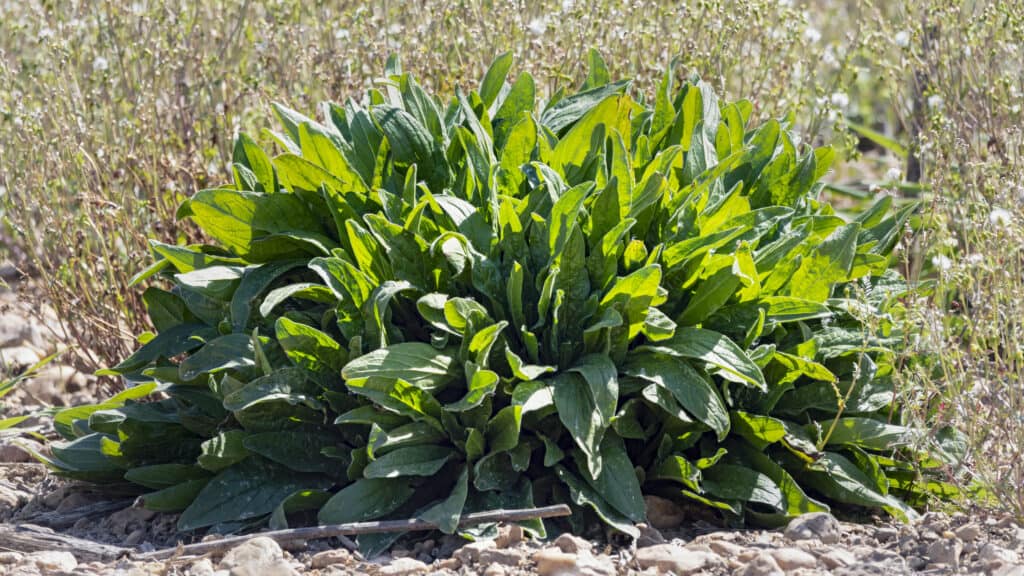You’re wrong if you think a forager’s prime time starts in August. You can reap the bounty of a wild harvest right now, says expert forager Carl Mintern, who picks out three favourites for early spring.
As we rise out of a very mild winter this year, we see the young buds of spring appearing earlier and in more abundance than usual.
For me this is an opportunity for action – the wild food harvest starting gun has officially gone off and we are into a forager’s equivalent of what a gardener may consider their maincrop season.

Traditionally, gorse was important to the rural economy throughout the British Isles, and used as winterfodder for livestock. Commonly called fuzz moots, gorse roots were dried and burned as fuel – touted to be better than coal, hotter and cleaner. Well into the nineteenth century, they were used to fuel brick bread ovens, which were often called furze ovens.
People who are unaccustomed to foraging may consider the foraging season as beginning
in August and ending around October, with most of the fruit and fungi that can be found across the UK at that time of year. If you are someone who thinks this way then, well, that’s what I am here for! And you have been missing out on some of the best foraging of the year.
The British countryside offers wild edible food in every one of the twelve months, but from early March things really start to get exciting, and this year it’s all happening even earlier than usual. Let’s have a look at three of the plants that will make their way into my kitchen regularly this March…

Wild garlic was so highly valued in Ireland that, according to the Old Irish Brehon laws, there was a fine for stealing it from private land – the poacher would forfeit “two and a half milch cows”. One wonders how the penalty of two and a half cows was paid.
Gorse flowers (Common Ulex Europeaus)
The bright yellow blossoms of the gorse bush act as a flag for foragers seeking out these deliciously mild and sweet additions to our wild salads. These yellow petals, with scents ranging from coconut to almond, are a real survivor and can be found in the harshest of environments.
Within the Blackmore Vale, the windswept crests of hills are one place to find this plant with ease when out walking, or even alongside the road while taking a country drive.
Common Gorse is in flower from January till June, when Western gorse (less common) takes over here in the southwest of the UK. There really is never a good reason not to have some species of flower to adorn your salads. You can also add these blossoms to bread dough, where they will retain their bright yellow colouring, speckling each slice of your loaf with the golden glow of spring.
Common sorrel (Rumex Acetosa)
Common, or garden, sorrel is a plant every forager should have in their repertoire. The tangy zing from the oxalic acid gives it a citrus flavour, making it another great salad plant. Chefs among you will no doubt already be familiar with sorrel as it is commonly used to make soups, or pair with chicken dishes.
This super-common plant, usually considered a weed, is a herb you can buy seeds for and grow in your own herb garden – or you can simply walk outside your door and harvest it from the wild (I know which I prefer).
It is very common; it will be growing in grassland and pastures across the Blackmore Vale, and almost certainly in your own lawn if you have one.
Identified by its two ‘arrowhead’ style points, one must take care to avoid the poisonous lords and ladies which can appear superficially similar.

Wild garlic – our favourite!
The plant, native to Britain, has a long list of synonyms, which include Bear’s garlic, Broad- leaved garlic, Ramsons and Wood garlic. It can be found in many woodland sites across the UK. I personally find it very common on some of our countryside roadsides that meander through woodland – you will often smell it before you see it!
The whole plant is edible – use it as you would garlic. A personal favourite of mine is to bake fish wrapped in the leaves which acts to steam them while infusing a gentle flavour.
As with sorrel, wild garlic has been mistaken for Lords and Ladies in the past so care should be taken in identification.
by Carl Mintern
See details and availability of Carl’s local foraging courses on his website Self sufficient Hub here



[…] is also worth mentioning that wild garlic, and all the other plants I mentioned in March’s issue of the BV magazine are still available to harvest, so you might want to click that link and revisit before you leave […]